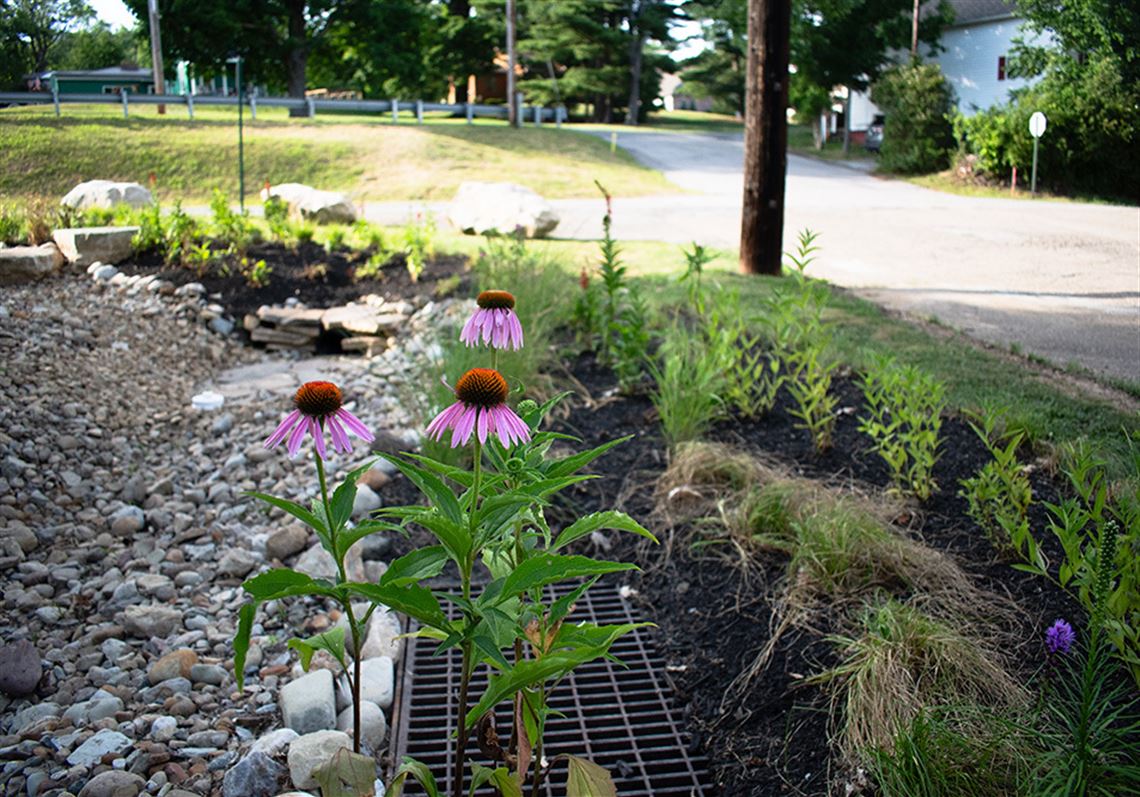The grounds at the Findlay Township Activity Center are more appealing and environmentally sustainable after two rain gardens were added recently to the upper and lower levels.
Totaling about 2,500 square feet, the plots are designed to manage stormwater, enhance biodiversity and prompt environmental stewardship.
They were made possible by a Growing Greener Plus grant from the Pennsylvania Department of Environmental Protection and matching funds from the township. They were dedicated in a ribbon-cutting ceremony on June 25.
The gardens, which showcase native plants, filter sediment and absorb nutrients commonly found in stormwater pollution and play a role in preventing flooding and improving water quality in the Montour Run Watershed.
Encompassing approximately 37 square miles in western Allegheny County, the watershed starts near the Pittsburgh International Airport and flows west for 13 miles before meeting the Ohio River in Coraopolis. It includes six larger tributaries that contribute to its flow.
The gardens help collect stormwater that flows over impervious surfaces such as roads and parking lots, collecting pollutants and contributing to streambank erosion and localized flooding. Also harmful is abandoned mine damage with contaminants such as iron and aluminum that harm plants and animals within the watershed.
The gardens provide habitats for native species, leading to urban cooling and improved air quality. Plants include purple coneflower, blazing star, cardinal flower, big bluestem, false sunflower and red twig dogwood.
Joe Pfeifer, Findlay’s stormwater maintenance manager, said the rain gardens helped the township meet the goals of the Municipal Separate Storm Sewer System program, which focuses on managing discharges into the state's waters.
Every time it rains, he expects the gardens to help capture 1-2 pounds of soil.
“It regenerates the groundwater and gives pollinators such as bees a chance to cross-pollinate the flowers,” he said.
Amy Miller, watershed program manager of the Allegheny County Conservation District, said the project serves as a model for sustainable stormwater management practices.
“It demonstrates effective ways to mitigate runoff, improve water quality and enhance local diversity,” she said. “Moreover, the garden serves as an educational tool, demonstrating to residents, businesses and other stakeholders the benefits of green infrastructure in urban settings.”
Melissa Church, president of the Montour Run Watershed Association, agreed it sets a good example.
“This garden will be a great year-round demonstration area that I can reference as a success story when other conservation groups and municipalities are seeking solutions and funding ideas for their own problem areas,” she said.
First Published: July 19, 2024, 4:00 a.m.
















